NCERT Solutions Class 9 Maths
Chapter – 10 (Circles)
The NCERT Solutions in English Language for Class 9 Mathematics Chapter – 10 Circles Exercise 10.3 has been provided here to help the students in solving the questions from this exercise.
Chapter 10: Circles
- NCERT Solution Class 9 Maths Ex – 10.1
- NCERT Solution Class 9 Maths Ex – 10.2
- NCERT Solution Class 9 Maths Ex – 10.4
- NCERT Solution Class 9 Maths Ex – 10.5
- NCERT Solution Class 9 Maths Ex – 10.6
Exercise – 10.3
1. Draw different pairs of circles. How many points does each pair have in common? What is the maximum number of common points?
Answer – In this, there are no common points.
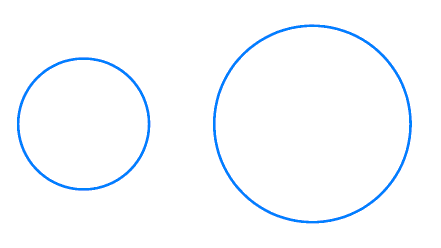
In this, there is only one common point.
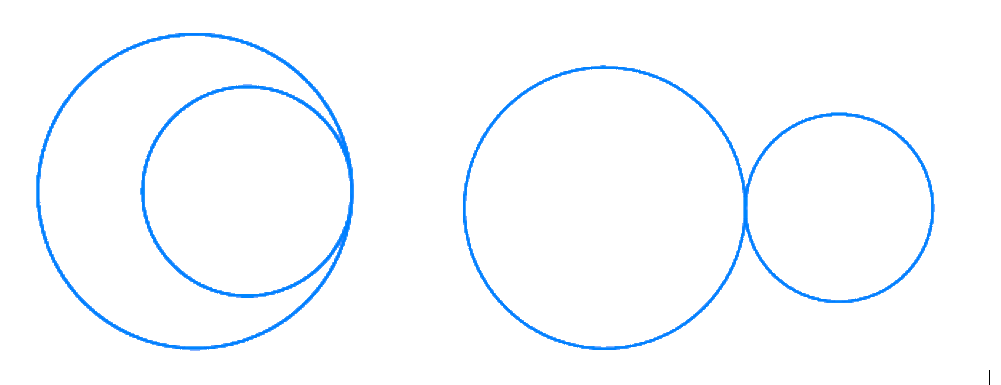
In this, there are two common points.
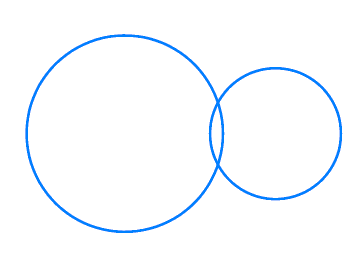
2. Suppose you are given a circle. Give a construction to find its centre.
Answer – Construction:
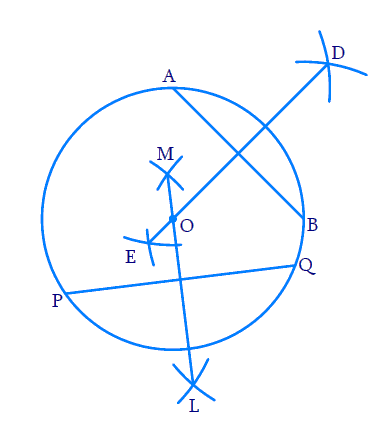
Step 1 – Draw a circle with a convenient radius.
Step 2 – Draw 2 chords AB and PQ of any length.
Step 3 – With A as center and radii more than half the length of AB, draw two arcs on opposite sides of chord AB. With the same radius and with B as center, draw two arcs cutting the former arcs. Join the line. Now DE is the perpendicular bisector of AB.
Step 4 – With P as center and radii more than half the length of PQ, draw two arcs on opposite sides of chord PQ. With the same radius and with Q as the center, draw two arcs cutting the former arcs. Join the line. Now LM is the perpendicular bisector of PQ.
Step 5 – As the center of the circle should lie both on DE and LM, it is obvious that the intersection points of DE and LM is the center of circle. Mark the intersection points as O.
Step 6 – O is the required center of the circle.
3. If two circles intersect at two points, prove that their centres lie on the perpendicular bisector of the common chord.
Answer – Let the two circles with centre P and Q intersect at points A and B.
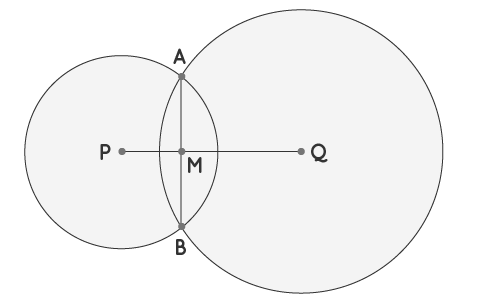
Join AB. (AB is the common chord.)
Join PQ. (AB and PQ bisect each other at M.)
Let M be the midpoint of AB.
Hence, PM ⊥ AB [Since, the line drawn through the centre of a circle to bisect a chord is perpendicular to the chord]
∠PMA = 90º
Now, since M is the midpoint of AB
Hence, QM ⊥ AB
∠QMA = 90º
Thus, ∠PMQ = ∠PMA + ∠QMA = 90º + 90º = 180º
Hence PMQ is a straight line and PMQ ⊥ AB
Therefore, PMQ is the perpendicular bisector of the common chord AB and passes through the two centers P and Q.
So, the centres lie on the perpendicular bisector of the common chords.

Leave a Reply